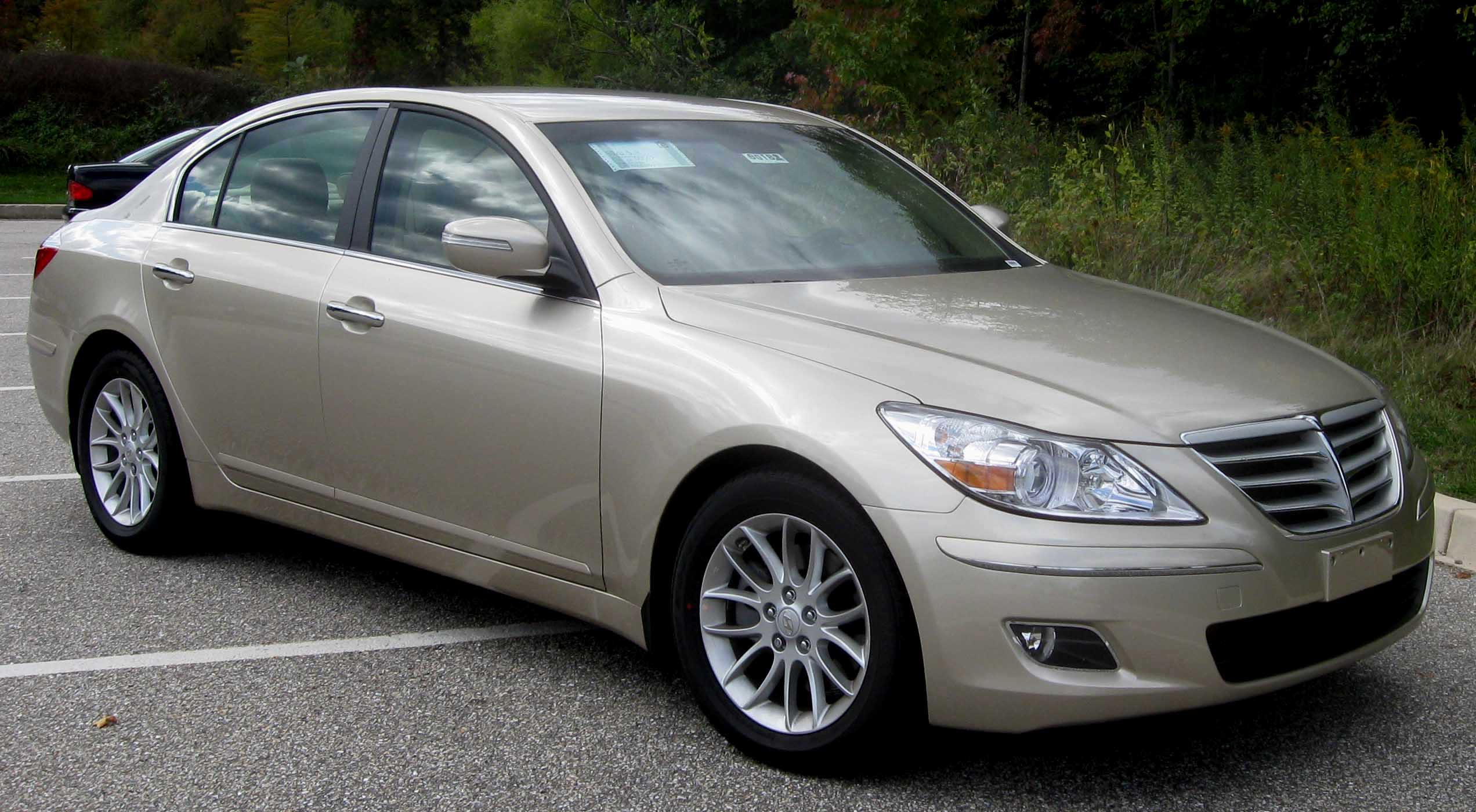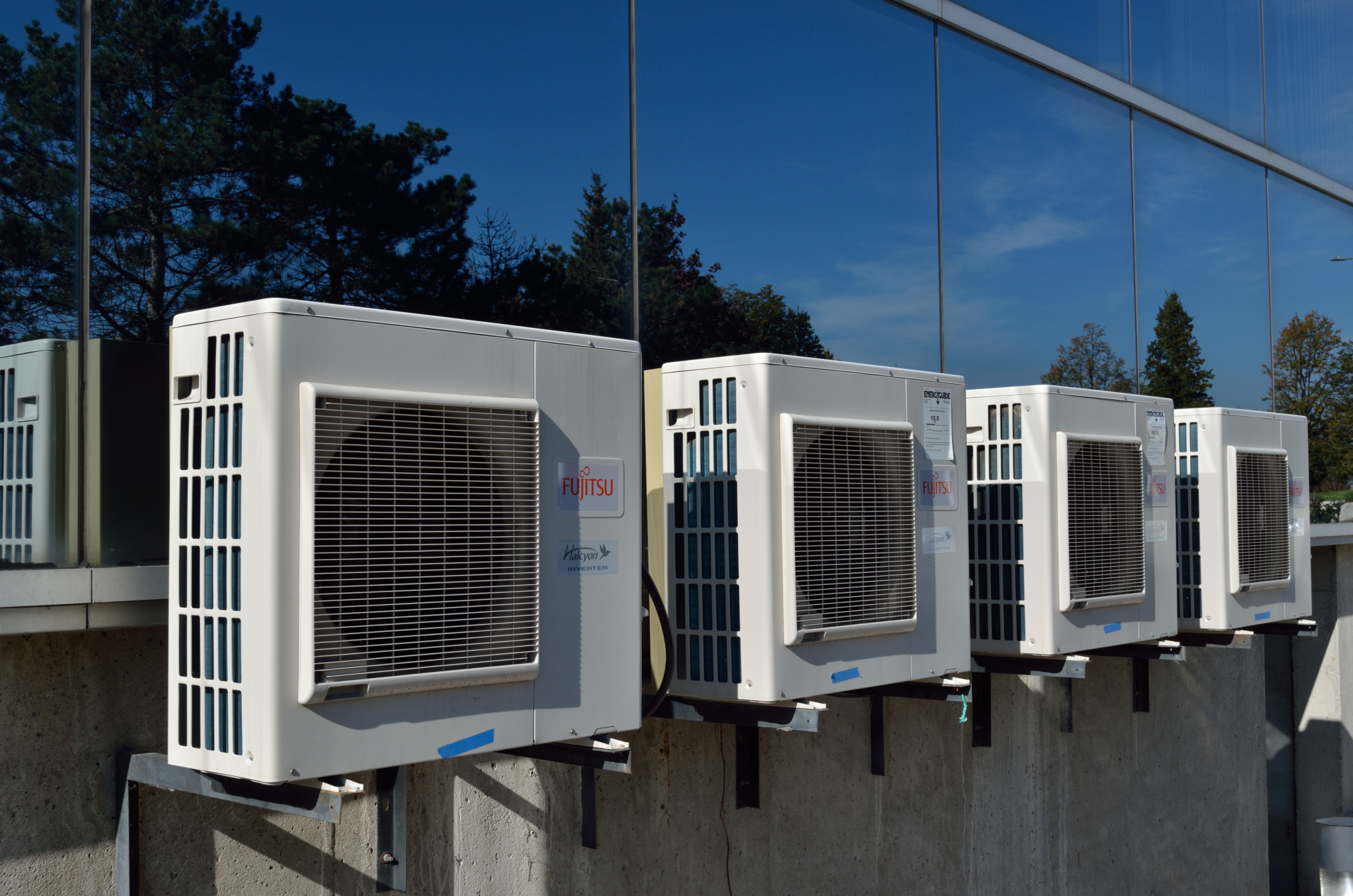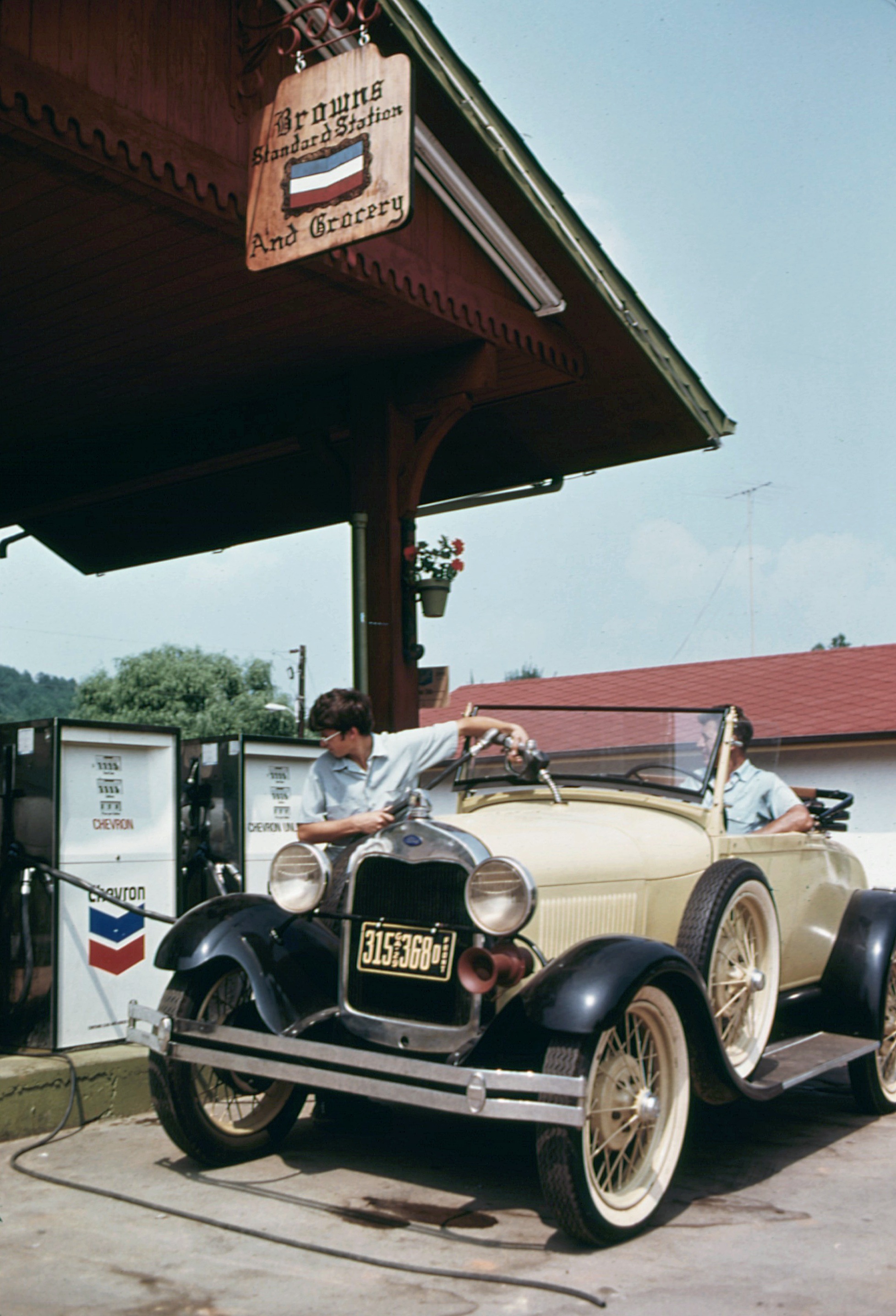|
Packard One-Ten
The Packard Eighteenth Series One-Ten was a range of six-cylinder automobiles produced by the Packard Motor Car Company of Detroit, Michigan during the 1940 and 1941 model years. The One-Ten designation was renamed from the previous Packard Fifteenth Series Six (115-C).The One-Ten shared the wheelbase of the One-Twenty but was given the One-Ten designation to indicate it was the entry level product. Packard reintroduced a line of six-cylinder cars in 1937 after a ten-year absence as a response to the economic depression and ongoing recovery cycle in the United States. As an independent automaker, Packard could not look to other internal divisions to support its luxury models, so the inclusion of the Six, and the later One-Ten, was necessary to aid in supporting the firm's bottom line until better times returned. Critics of the Packard Six and One-Ten have long maintained they hurt Packard's reputation of being America's premier luxury marque. Still, the reintroduction of the Six ... [...More Info...] [...Related Items...] OR: [Wikipedia] [Google] [Baidu] |
Coupé
A coupe or coupé (, ) is a passenger car with a sloping or truncated rear roofline and typically with two doors. The term ''coupé'' was first applied to horse-drawn carriages for two passengers without rear-facing seats. It comes from the French past participle of , "cut". Some coupé cars only have two seats, while some also feature rear seats. However, these rear seats are usually lower quality and much smaller than those in the front. Furthermore, "A fixed-top two-door sports car would be best and most appropriately be termed a 'sports coupe' or 'sports coupé'". __TOC__ Etymology and pronunciation () is based on the past participle of the French verb ("to cut") and thus indicates a car which has been "cut" or made shorter than standard. It was first applied to horse-drawn carriages for two passengers without rear-facing seats. These or ("clipped carriages") were eventually clipping (phonetics), clipped to .. There are two common pronunciations in English: * () ... [...More Info...] [...Related Items...] OR: [Wikipedia] [Google] [Baidu] |
Packard Six
The Packard Six was a series of luxury automobiles built over several generations by Packard from 1913 until 1947. The name was originally used to describe the car in general terms, while Series numbers were initially used and changed every year to denote wheelbases, then the number classification changed as market conditions changed so as to keep competitive with other luxury brands. There are three generations that used a six-cylinder engine before World War II, with varying engine displacements and periodic mechanical changes. First Generation (1912–1915) The Packard Six was the first top level luxury platform built by the company to introduce a six-cylinder engine, and was offered in three wheelbase options of , , and . This was the last Packard to use the term "model" in its designation. Officially, the car was first introduced as the Packard Six Series 1-48. The car was described with varying marketing terms such as the Packard Six, the Packard Dominant Six, the Packard 'S ... [...More Info...] [...Related Items...] OR: [Wikipedia] [Google] [Baidu] |
Cars Introduced In 1940
A car, or an automobile, is a motor vehicle with wheels. Most definitions of cars state that they run primarily on roads, Car seat, seat one to eight people, have four wheels, and mainly transport private transport#Personal transport, people rather than cargo. There are around one billion cars in use worldwide. The French inventor Nicolas-Joseph Cugnot built the first steam-powered road vehicle in 1769, while the Swiss inventor François Isaac de Rivaz designed and constructed the first internal combustion-powered automobile in 1808. The modern car—a practical, marketable automobile for everyday use—was invented in 1886, when the German inventor Carl Benz patented his Benz Patent-Motorwagen. Commercial cars became widely available during the 20th century. The 1901 Oldsmobile Curved Dash and the 1908 Ford Model T, both American cars, are widely considered the first mass-produced and mass-affordable cars, respectively. Cars were rapidly adopted in the US, where they replac ... [...More Info...] [...Related Items...] OR: [Wikipedia] [Google] [Baidu] |
Convertibles
A convertible or cabriolet () is a passenger car that can be driven with or without a roof in place. The methods of retracting and storing the roof vary across eras and manufacturers. A convertible car's design allows an open-air driving experience, with the ability to provide a roof when required. A potential drawback of convertibles is their reduced structural rigidity (requiring significant engineering and modification to counteract the side effects of almost completely removing a car's roof). The majority of convertible roofs are of a folding construction framework with the actual top made from cloth or other fabric. Other types of convertible roofs include retractable hardtops (often constructed from metal or plastic) and detachable hardtops (where a metal or plastic roof is manually removed and often stored in the trunk). Terminology Other terms for convertibles include cabriolet, cabrio, drop top, drophead coupé, open two-seater, open top, rag top, soft top, spid ... [...More Info...] [...Related Items...] OR: [Wikipedia] [Google] [Baidu] |
Sedans
A sedan (American English) or saloon (British English) is a passenger car in a three-box configuration with separate compartments for an engine, passengers, and cargo. The first recorded use of ''sedan'' in reference to an automobile body occurred in 1912. The name derives from the 17th-century litter known as a sedan chair, a one-person enclosed box with windows and carried by porters. Variations of the sedan style include the close-coupled sedan, club sedan, convertible sedan, fastback sedan, hardtop sedan, notchback sedan, and sedanet. Definition A sedan () is a car with a closed body (i.e., a fixed metal roof) with the engine, passengers, and cargo in separate compartments. This broad definition does not differentiate sedans from various other car body styles. Still, in practice, the typical characteristics of sedans are: * a B-pillar (between the front and rear windows) that supports the roof; * two rows of seats; * a three-box design with the engine at the front and ... [...More Info...] [...Related Items...] OR: [Wikipedia] [Google] [Baidu] |
Rear-wheel-drive Vehicles
Rear-wheel drive (RWD) is a form of engine and transmission layout used in motor vehicles, in which the engine drives the rear wheels only. Until the late 20th century, rear-wheel drive was the most common configuration for cars. Most rear-wheel drive vehicles feature a longitudinally-mounted engine at the front of the car. Layout The most common layout for a rear-wheel drive car is with the engine and transmission at the front of the car, mounted longitudinally. Other layouts of rear-wheel drive cars include front-mid engine, rear-mid engine, and rear-engine. Some manufacturers, such as Alfa Romeo, Lancia, Porsche (944, 924, 928) and Chevrolet (C5, C6, and C7 Corvettes), place the engine at the front of the car and the transmission at the rear of the car, in order to provide a more balanced weight distribution. This configuration is often referred to as a transaxle since the transmission and axle are one unit. History 1890s to 1960s Many of the cars built in the 19th cent ... [...More Info...] [...Related Items...] OR: [Wikipedia] [Google] [Baidu] |
Packard Vehicles
Packard (formerly the Packard Motor Car Company) was an American luxury automobile company located in Detroit, Michigan. The first Packard automobiles were produced in 1899, and the last Packards were built in South Bend, Indiana, in 1958. One of the "Three Ps" – alongside Peerless Motor Company and Pierce-Arrow – the company was known for building high-quality luxury automobiles before World War II. Owning a Packard was considered prestigious, and surviving examples are often found in museums and automobile collections. Packard vehicles featured innovations, including the modern steering wheel, air-conditioning in a passenger car, and one of the first production 12-cylinder engines, adapted from developing the Liberty L-12 engine used during World War I to power warplanes. During World War II, Packard produced 55,523 units of the two-stage/two-speed supercharger equipped Merlin V-12s engines under contract with Rolls-Royce. Packard also made the versions of the Liberty ... [...More Info...] [...Related Items...] OR: [Wikipedia] [Google] [Baidu] |
Air Conditioning
Air conditioning, often abbreviated as A/C (US) or air con (UK), is the process of removing heat from an enclosed space to achieve a more comfortable interior temperature, and in some cases, also controlling the humidity of internal air. Air conditioning can be achieved using a mechanical 'air conditioner' or through other methods, such as passive cooling and ventilative cooling. Air conditioning is a member of a family of systems and techniques that provide Heating, ventilation, and air conditioning, heating, ventilation, and air conditioning (HVAC). Heat pumps are similar in many ways to air conditioners but use a reversing valve, allowing them to both heat and cool an enclosed space. Air conditioners, which typically use vapor-compression refrigeration, range in size from small units used in vehicles or single rooms to massive units that can cool large buildings. Air source heat pumps, which can be used for heating as well as cooling, are becoming increasingly common in cool ... [...More Info...] [...Related Items...] OR: [Wikipedia] [Google] [Baidu] |
Taxicab
A taxi, also known as a taxicab or simply a cab, is a type of vehicle for hire with a Driving, driver, used by a single passenger or small group of passengers, often for a non-shared ride. A taxicab conveys passengers between locations of their choice. This differs from public transport where the pick-up and drop-off locations are decided by the service provider, not by the customers, although demand responsive transport and share taxis provide a hybrid bus/taxi mode. There are four distinct forms of taxicab, which can be identified by slightly differing terms in different countries: * Hackney carriages, also known as public hire, hailed or street taxis, licensed for hailing throughout communities * Private hire vehicles, also known as minicabs or private hire taxis, licensed for pre-booking only * Taxibuses, also come in many variations throughout the Developing country, developing countries as Share taxi#United States, jitneys or jeepney, operating on pre-set routes typified ... [...More Info...] [...Related Items...] OR: [Wikipedia] [Google] [Baidu] |
Detroit
Detroit ( , ) is the List of municipalities in Michigan, most populous city in the U.S. state of Michigan. It is situated on the bank of the Detroit River across from Windsor, Ontario. It had a population of 639,111 at the 2020 United States census, 2020 census, making it the List of United States cities by population, 26th-most populous city in the United States and the largest U.S. city on the Canada–United States border. The Metro Detroit area, home to 4.3 million people, is the second-largest in the Midwestern United States, Midwest after the Chicago metropolitan area and the 14th-largest in the United States. The county seat, seat of Wayne County, Michigan, Wayne County, Detroit is a significant cultural center known for its contributions to music, art, architecture and design, in addition to its historical automotive and industrial background. In 1701, Kingdom of France, Royal French explorers Antoine de la Mothe Cadillac and Alphonse de Tonty founded Fort Pontc ... [...More Info...] [...Related Items...] OR: [Wikipedia] [Google] [Baidu] |
Convertible
A convertible or cabriolet () is a Car, passenger car that can be driven with or without a roof in place. The methods of retracting and storing the roof vary across eras and manufacturers. A convertible car's design allows an open-air driving experience, with the ability to provide a roof when required. A potential drawback of convertibles is their reduced Torsion (mechanics), structural rigidity (requiring significant engineering and modification to counteract the side effects of almost completely removing a car's roof). The majority of convertible roofs are of a folding construction framework with the actual top made from cloth or other fabric. Other types of convertible roofs include retractable hardtops (often constructed from metal or plastic) and Convertible#Detachable hardtop, detachable hardtops (where a metal or plastic roof is manually removed and often stored in the trunk (car), trunk). Terminology Other terms for convertibles include cabriolet, cabrio, drop top, ... [...More Info...] [...Related Items...] OR: [Wikipedia] [Google] [Baidu] |
Packard
Packard (formerly the Packard Motor Car Company) was an American luxury automobile company located in Detroit, Michigan. The first Packard automobiles were produced in 1899, and the last Packards were built in South Bend, Indiana, in 1958. One of the "Three Ps" – alongside Peerless Motor Company and Pierce-Arrow – the company was known for building high-quality luxury automobiles before World War II. Owning a Packard was considered prestigious, and surviving examples are often found in museums and automobile collections. Packard vehicles featured innovations, including the modern steering wheel, air-conditioning in a passenger car, and one of the first production 12-cylinder engines, adapted from developing the Liberty L-12 engine used during World War I to power warplanes. During World War II, Packard produced 55,523 units of the two-stage/two-speed supercharger equipped Merlin V-12s engines under contract with Rolls-Royce. Packard also made the versions of the Li ... [...More Info...] [...Related Items...] OR: [Wikipedia] [Google] [Baidu] |











